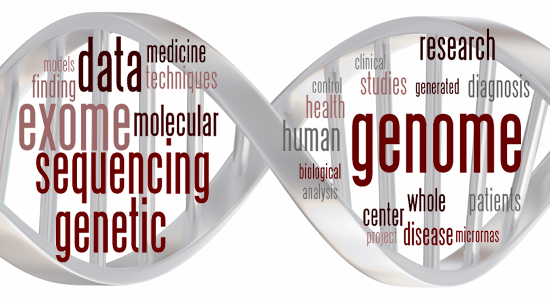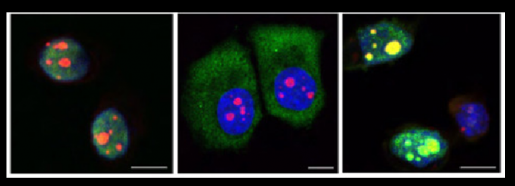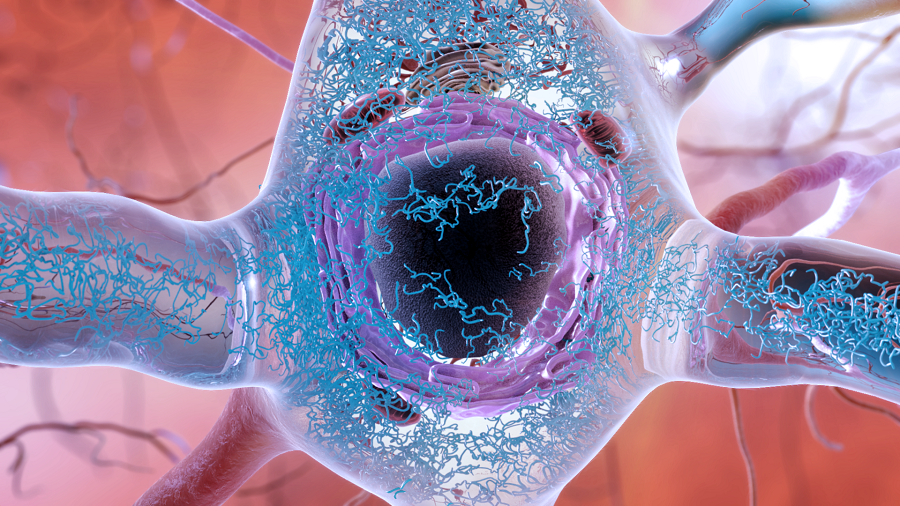A wide spectrum of human neurological diseases linked to variations of one gene, DHX9
Lea este artículo en español, el cual está después de la versión en inglés.
An international team of researchers at the GREGoR Research Center at Baylor College of Medicine, the Chinese University of Hong Kong, the German Mouse Clinic and collaborating institutions has provided a genetic diagnosis to a group of 20 patients with neurological diseases that were undiagnosed until now. The team analyzed the patients’ genes and conducted family studies to detect genetic mutations related to their condition. The results appear in the American Journal of Human Genetics.

“Our study started with two patients with remarkably different neurological conditions for which they did not have a diagnosis despite extensive testing. Looking to find an answer to explain their condition, the patients joined our working group studying the genetic underpinnings or genomics of rare diseases,” said first author Dr. Daniel Calame, instructor of pediatric neurology and developmental neurosciences and part of the GREGoR Research Center at Baylor.
In the beginning, we did not have any reason to believe that these patients had a genetic diagnosis in common. It was after we analyzed the results of their genome sequencing that we realized that each had a distinct unusual variant of gene DHX9.”
This is the first time that this gene has been associated with a human disease. Our findings motivated us to expand our efforts to find more cases, ultimately the 20 we came upon.”

One gene, many neurological disorders
One of the surprising aspects of this study is that the patients’ conditions are remarkably diverse. “Some patients have the most severe developmental disorders, including intellectual disability, seizures and movement disorders. Other patients have less severe conditions, for instance autism with normal IQ, while other patients have milder conditions – normal development but nerve degeneration leading to neuropathy, a condition typically causing numbness or weakness in adolescence or adulthood,” Calame explained.
To begin to understand how variations in gene DHX9 can disturb neurodevelopment in such a variety of ways, the researchers conducted laboratory experiments in which the different DHX9 variants found in patients were introduced into cells and their functions compared to that of the DHX9 variant not associated with a condition.

“These cellular studies allowed us to distinguish quite clearly the functional alterations in the variants in the severe cases from those associated with the less severe or the mildest cases,” said co-corresponding author Dr. Shen Gu, assistant professor in the School of Biomedical Sciences at the Chinese University of Hong Kong.
For instance, some variants associated with severe neurodevelopmental disorders were not located in the cell nucleus where the normal variant is typically found, but outside the nucleus in the surrounding cytoplasm.

“Another variant linked to severe neurodevelopmental disorders did not affect DHX9 localization but instead increased double-stranded DNA breaks, a process that negatively affects the integrity of the DNA and can disrupt the normal function of the cell,” Gu said.
In addition to cellular studies, the researchers explored the effect of eliminating the Dhx9 gene in animal models. “Without the Dhx9 gene, the animals were less active in new environments and had a reduced sense of hearing, indicating a connection between the gene and neural functions,” Gu said.
Our study shows DHX9 is involved in regulating mammalian neurodevelopment and neuronal well-being.”

“This is an amazing story of international collaborative science, the global nature of human genetics research and the insights that can be gleaned by the study of neurological diseases from a gene and genomic variation viewpoint – achievements possible by the joining of scientific forces from two of my favorite cities: Hong Kong and Houston,” said Dr. James R. Luski, the Cullen Foundation Endowed Chair in Molecular Genetics, professor of pediatrics and molecular and human genetics and member of the Dan L Duncan Comprehensive Cancer Center at Baylor. Lupski also is co-corresponding author of this work and a principal investigator at GREGoR Research Center.
Find a complete list of the contributors to this work, their affiliations and financial support in the publication.
Follow From the Labs on Twitter @BCMFromtheLabs.
VERSION EN ESPAŇOL
Amplio espectro de problemas neurológicos y neuropatías vinculados a variaciones de un solo gen, DHX9
Un equipo internacional de investigadores del GREGoR Research Center en Baylor College of Medicine, Chinese University of Hong Kong, German Mouse Clinic y otras instituciones ha proporcionado un diagnóstico genético a 20 pacientes con problemas neurológicos que no habían sido diagnosticados hasta ahora. El equipo analizó los genes de los pacientes y llevó a cabo estudios familiares para detectar mutaciones genéticas relacionadas con sus condiciones. Este estudio está publicado en American Journal of Human Genetics.
“Nuestro estudio empezó con dos pacientes con condiciones neurológicas notablemente diferentes que no tenían un diagnóstico a pesar de pruebas extensas. Buscando encontrar una explicación para su condición, los pacientes contactaron a nuestro grupo de trabajo estudiando las bases genéticas o la genómica de enfermedades raras,” dijo el primer autor del trabajo, Dr. Daniel Calame, instructor de neurología pediátrica y de neurociencia del desarrollo y miembro del GREGoR Research Center en Baylor. “Al principio, no teníamos ninguna razón para pensar que estos pacientes compartían el mismo diagnóstico genético. Fue después que analizamos los resultados de sus secuencias genómicas que nos dimos cuenta que cada uno tiene una variante única y poco común del gen DHX9. Esto nos motivó a buscar más casos, finalmente los 20 que encontramos.”
Un gen, muchos trastornos del neurológicos
Uno de los aspectos sorprendentes de este estudio es que las condiciones de los pacientes son notablemente diversas. “Algunos pacientes tienen trastornos de desarrollo severo, incluyendo discapacidad intelectual, convulsiones y problemas de movimiento. Otros pacientes tienen condiciones menos severas, por ejemplo autismo con IQ (coeficiente de inteligencia) normal, mientras que otros pacientes tienen un desarrollo normal pero con degeneración de nervios que causa neuropatía, una condición que lleva al entumecimiento o debilidad en adolescentes y adultos,” Calame explicó.
Para empezar a entender cómo variaciones en el gen DHX9 podrían perturbar el desarrollo neurológico de manera tan variada, los investigadores hicieron experimentos en los cuales introdujeron en células las diferentes variantes del gen presentes en los pacientes, y compararon las funciones de las variantes con la del gen DHX9 no asociado con una enfermedad.
“Estos estudios celulares nos permitieron distinguir claramente las alteraciones funcionales de las variantes en los casos más severos de aquéllas asociadas con los casos menos severos,” dijo la co-lider del proyecto Dra. Shen Gu, profesora asistente de la School of Biomedical Sciences en la Chinese University of Hong Kong.
Por ejemplo, algunas de las variantes asociadas con problemas de desarrollo neurológico severo no están localizadas en el núcleo de las células, donde la variante normal se encuentra típicamente, sino fuera del núcleo, en el citoplasma que lo rodea.
“Otra variante asociada con problemas neurológicos severos no afecta la localización de DHX9, en cambio aumenta las rupturas de ADN, el material genético de doble cadena. Este proceso afecta negativamente la integridad del ADN y perturba el funcionamiento normal de las células,” dijo Gu.
Además de hacer estudios con células, los investigadores también exploraron el efecto del gen DHX9 en modelos animales. “Animales sin el gen DHX9 son menos activos en ambientes nuevos y tienen reducido el sentido del oído, lo que indica una conexión entre el gen y funciones neurológicas,” dijo Gu. “Nuestro estudio muestra que DHX9 está involucrado en regular el desarrollo neurológico en mamíferos y en el bienestar de las neuronas.”
“Esta es una historia asombrosa de colaboración científica internacional, de la naturaleza global de la investigación genética en humanos y de las perspectivas que pueden percibirse al estudiar enfermedades neurológicas desde el punto de vista genético y genómico – logros que han sido possibles al unirse las fuerzas científicas de dos de mis ciudades favoritas: Hong Kong y Houston,” dijo Dr. James R. Luski, Cullen Foundation Endowed Chair en Molecular Genetics, profesor de pediatría y molecular and human genetics y miembro del Dan L Duncan Comprehensive Cancer Center en Baylor. Lupski también es co-lider de este trabajo y uno de los investigadores principales en el GREGoR Research Center.
Consulte la publicación para encontrar la lista completa de los autores de este trabajo, sus afiliaciones y el soporte financiero de este proyecto.



